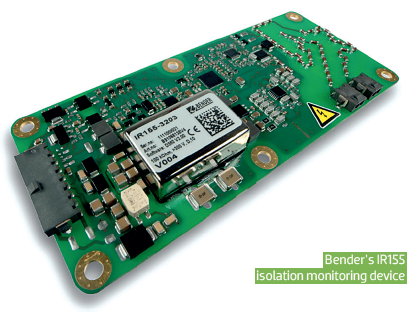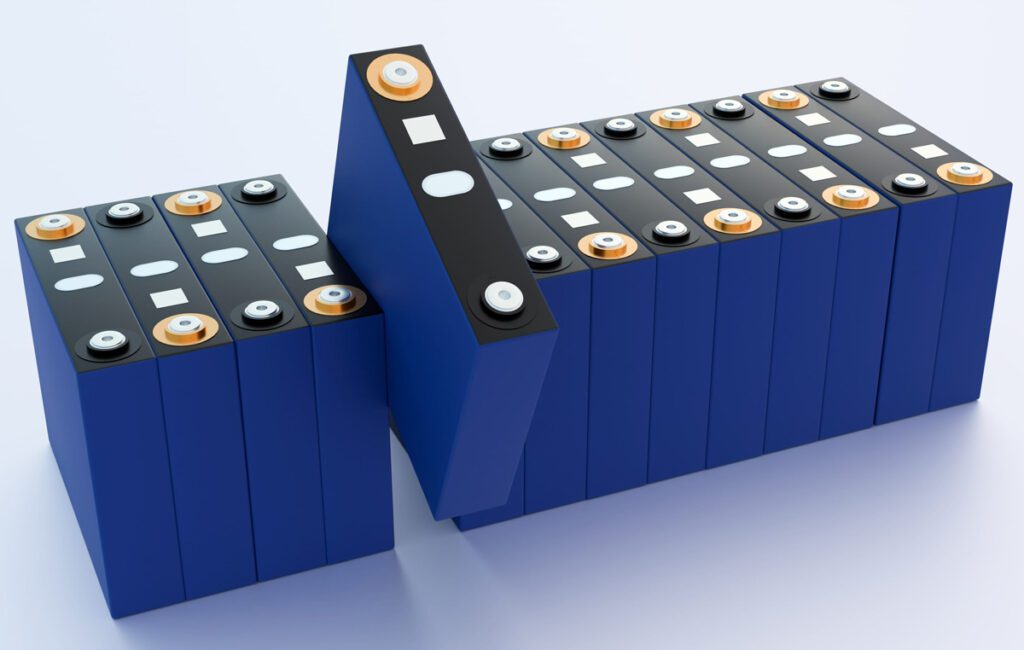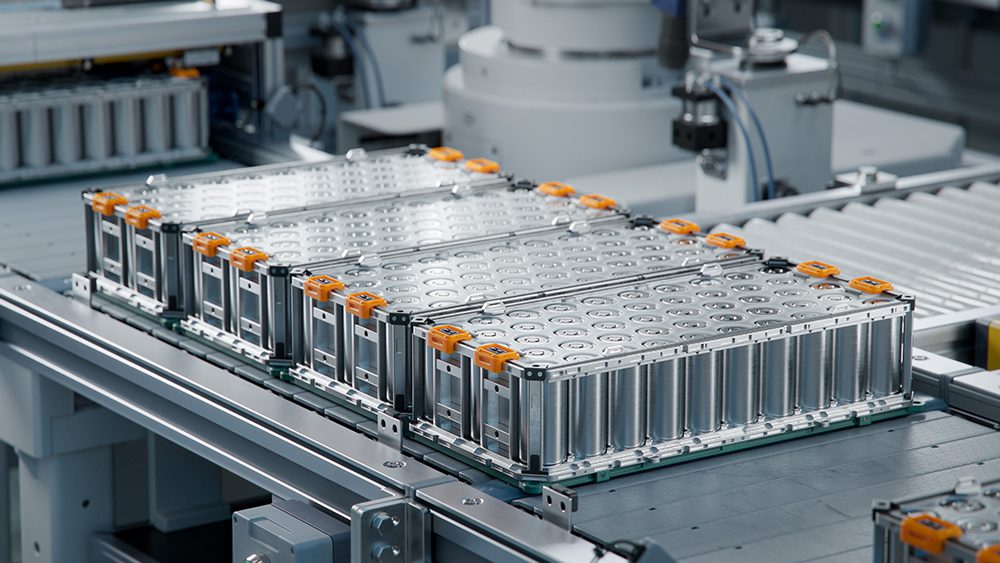Traditional 12-volt automotive batteries are grounded to the metal chassis of vehicles for a few different reasons, mainly driven by cost. Using the metal frame as a common ground essentially reduces the number of wires needed for all of the 12-volt systems by half – saving money and reducing weight. For example, to power a tail light you only need to route one wire for the positive connection to the back of the vehicle, instead of two. Add in some fuses in case of problems, and you have a very safe and efficient system.
The high-voltage battery packs in hybrids and EVs, however, are not grounded to the chassis for a very good reason: safety. Early on in the development of these systems, engineers realized that they needed more robust forms of protection for batteries that can reach a few hundred volts. So they decided to design ungrounded circuits with the battery packs floating in isolation while the vehicles are running.

In theory, this greatly reduces the shock hazard. In reality however, unexpected paths can be established between the battery pack and other conductive surfaces, caused by things like contamination, salt, humidity, faulty connectors, or mechanical problems like a pinched or chafed wire. The early detection of insulation problems is a major challenge.
Close call
For a scary example of the dangers of electrical issues, search YouTube for a video about a “Mechanic in KERS Shocker.” The video shows a Formula One racecar equipped with a Kinetic Energy Recovery System (KERS) during testing in 2008. The KERS-enabled vehicle stores energy from regenerative braking in a battery pack that drivers can later access for a boost of power.
In the video, you see a race car – using an early version of KERS – pull into the pit lane as mechanics surround the vehicle to perform the typical in-race servicing. The first mechanic to touch the body of the vehicle is violently shocked and immediately falls to the ground. Luckily, as a spokesman for the race team told autosport.com, the man sustained only “slight injuries to his left hand and grazing on his left arm,” and “after a brief examination at the track’s medical center, he has returned to the test team.”
Constant monitoring
Since those early electrification days of 2008, energy-dense battery packs in both racecars and production vehicles have come a long way. “Everyone in the industry agreed – from the standards organizations to the automakers – that there was a clear need for an isolation monitor device,” Torsten Gruhn, Chief Engineer at Bender, told Charged. “Now engineers design battery packs in a vehicle with a circuit to continuously monitor the state of its isolation, so at any point in time the system knows that nothing is shorted to the frame and that the car stays electrically safe.”

Bender has a 65-year history in providing electrical safety equipment to a range of industries, so as the car builders began to learn how to work with higher-voltage batteries, it was natural for them to turn to Bender for help.
“We supplied a few companies with the first iteration of isolation monitoring hardware,” said Gruhn. “At that time it was basically hardware adapted from industrial applications that was pretty large and bulky. Over time, customers pushed us to develop a product that was smaller, simpler, and cheaper – as the auto industry tends to do.”
Working closely with its new customer base in the world of hybrid, EV and fuel cell vehicles, Bender developed the IR155, an integrated monitoring circuit mounted on a single printed circuit board. The company supplied that system to a lot of electric truck and bus builders that were developing new drive systems. “We also support a lot of university build teams with the IR155,” said Gruhn. “We’ve been pleased to find that the organizers of those events put a big emphasis on ground fault protection, because there are a lot of students working on the vehicles.”

Production-ready
Recently, Bender released its latest-generation insulation monitoring device, iso165C. The new product was developed in partnerships with the HELLA group (a longtime manufacturer of lighting and electronic systems for the automotive industry), and Bender says that it is a “truly automotive-grade unit in a robust enclosure.”
The new device is designed to be production-ready for the fast-growing world of custom hybrid and EV manufacturers. While some of the major automakers typically design their own isolation monitoring circuits in-house, there are many niche EV builders who don’t have hundreds of engineers on staff, and they will gladly shop for quality off-the-shelf solutions when they are available.
“Over the past few years, the EV industry has really come to life and more and more vehicles are out there,” said Gruhn. Bender currently supplies the iso165C to heavy-duty electric bus and truck manufacturers and other niche EV companies.


The specs
The iso165C monitors the insulation resistance between the active HV components of an electrical drive system and the reference earth (chassis ground), both on the DC side and the AC motor side.
It has been designed to meet strict automotive requirements (wide-ranging temperature, vibration, EMC, etc), and the iso165C interface allows it to be integrated into an vehicle’s existing CAN environment.
The iso165C consists of two main components: the Vehicle Interface Controller (VIFC) and the Insulation Monitoring Controller (IMC). The VIFC consists of a microcontroller with a UART communication interface that translates and forwards requests from the HS-CAN bus transparently to the IMC. The corresponding IMC responses are returned to the requesting instance via the HS-CAN bus.
The VIFC supervises the running state of the IMC via a signal known as “Alive,” and internally and cyclically requests the insulation value and the running state of the IMC.
The IMC – which is galvanically separated from the car environment – generates internal alarm information from the measurement results, which is coded to produce the “Alive” signal and transmitted in parallel with the measurements and status information to the VIFC and then to the HS-CAN bus.
Major characteristics:
- Universal for Voltage Class B systems
iso165C: AC/DC 0-600 V - Patented measurement method for preventative detection of insulation faults 0-10 MΩ
- Permanent monitoring of earth connection to electrical chassis
- Detection of symmetrical insulation faults
- Additional safety via automatic self-test
- Short-circuit-proof outputs for:
fault messaging
measured value (PWM signal) - Available for DC 12 V and 24 V supply voltage
- Automotive approval e1 according to 72/245/EWG/EEC 2009/19/EG/EC
- CAN interface on iso165C
Relevant EV isolation monitoring standards:
- ISO 6469-3:2011-12
Electric propelled road vehicles – Safety inspections – Part 3: Protection of persons against electric shock - ISO 23273-3:2006-11
Fuel cell road vehicles – Safety inspections – Part 3 – Protection of persons against electric shock - UL 2231-1:2002-05
Personnel Protection Systems for Electric Vehicle (EV) Supply Circuits: General requirements - IEC 61557-8:2007-01
Electrical safety in low voltage distribution systems up to 1000 V AC and 1500 V DC – Equipment for testing measuring or monitoring protective measures – Part 8: Insulation monitoring devices for IT systems. - FMVSS 305
Electric Powered Vehicles: Electrolyte Spillage and Electrical Shock Protection
This article originally appeared in Charged Issue 26 – July/August 2016. – Subscribe now.


















































































